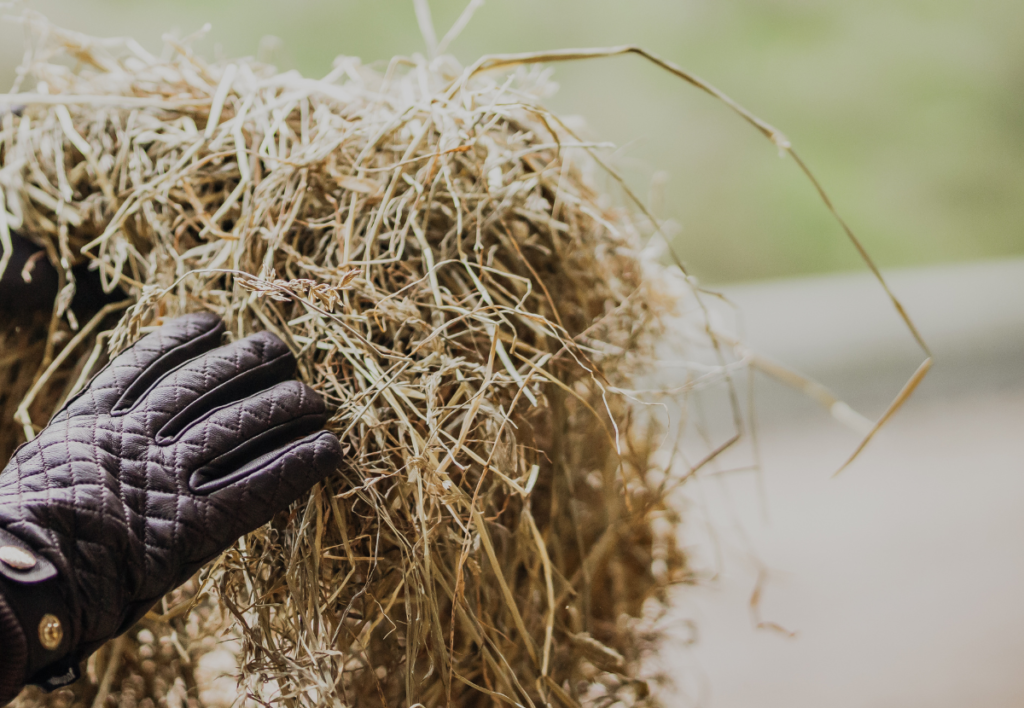Menu

Do you often think about this too? What is best, wrap or hay? It's not that straightforward, because there are advantages and disadvantages to both, and it depends on the individual product and the individual horse. Read about it in this article and learn more about the two products that every horse depends on.
Roughage should be the core of every horse's feeding plan.
In short, the horse's intestinal system is not designed to absorb starch in large amounts. Starch is found in all types of grain and several feed mixes. If the horse gets too much starch, it creates an imbalance in the important microorganisms that keep the horse's intestines healthy. Starch and sugar kill the bacteria that the horse needs in its intestine to live in balance.
In many countries, where the climate is humid, it can be harder to make hay that is dry enough, than to make wrap. Moreover, the storage of hay is more difficult and takes up indoor space, compared to wrap. Therefore, wrap can be a good solution for many. It's important that the wrap feels dry when the plastic is taken off, and that it smells fresh before it's fed to the horse.
If wrap is baled for a long time, it approaches silage which can cause stomach problems in horses. This can be indicated by loose stools and watery discharge. Here, it may be a good idea to gradually switch the horse to dry hay. Loose stools over a longer period can dehydrate the horse and even cause mineral deficiency.
Read also: Privat: Horses love to eat salt, even though they don't need it
Hay is dried grass, usually cut before the grass seeds. Hay is ideal roughage for horses, as it has a high dry matter level and more chewing time than fresh grass. Hay is usually tied together with hay twine and packed in squares so they can be stacked. Hay has a finer structure than straw, but there are still coarse and fine hays. Finer hay can be good for older horses or other horses with dental or mouth problems.
Wrap is the grass that is wrapped in plastic to keep it preserved. It is packed when it is partially dry, so the risk of dust is much lower than with hay. The wrapping itself creates an anaerobic and acidic environment that promotes fermentation processes. The advantage is that this form of ensiling increases the shelf life of the feed, without significantly reducing the nutritional value. But it is more prone to decay and thus become moldy than hay.
When feeding cattle, the same production occurs, but the difference is that it often consists of other products such as corn and is called silage instead of wrap. The difference also lies in the fact that cattle have a completely different intestinal system than horses and therefore can tolerate a much wetter product. It is NOT recommended to feed horses with silage, as most will experience a bad stomach.

Then there's a hybrid version that has also become popular in many countries. Wrapped hay contains relatively dry hay, packed in the same way as wrap. This makes storage easier without the roughage fermenting too much.
The hay should be dried to over 85% before it is wrapped in plastic, and before it can be called wrapped hay. Of course, there is still a risk that the contents will ensile, become moldy, or that the packaging will be punctured.
Read also: Why you should let your horse graze in the pasture
For frugal horses or horses prone to laminitis or other metabolic diseases, it is best to feed with wrap or hay that is harvested after the grass has been seeded or the seeds are removed via the combine harvester. The seeds contain lots of energy, therefore it is not suitable for frugal horses to feed with roughage that contains seeds.
If the grass is harvested with seeds or before the seeds are set, it will have a high energy content. Therefore, it may be more suitable for high-performing and non-frugal horses that use more energy.
However, it is important to be aware that different types of grass and different harvest years can influence the energy content, regardless of when it is harvested. Therefore, it is most important to have your horse's roughage tested.

Often, hay is considered a better roughage for the horse than wrap, as it is more natural for the horse to eat. However, the advantages of storing wrap, as well as less dust, are significant benefits. The fermentation process in wrap and thus the increased amount of sugar can be fatal for some types of horses. Additionally, the increased risk of developing mold can be a health factor for many horses. Wrapped hay can be a good alternative for many.
The most important thing is to have either your hay or wrap analyzed to know what's in it. Then you can adjust your roughage so the horse doesn't get too much sugar, as well as adjust your supplements for optimal mineral distribution for your horse.
Read also: So many kilometers does your horse walk in the paddock every single day
Sources
https://www.nordichorse.dk/blogs/blog/grovfoder-det-vigtigste-i-hestens-foderplan
https://brogaarden.eu/blogs/radgivning-faq/skal-jeg-vaelge-ho-eller-wrap-og-hvad-er-forskellen